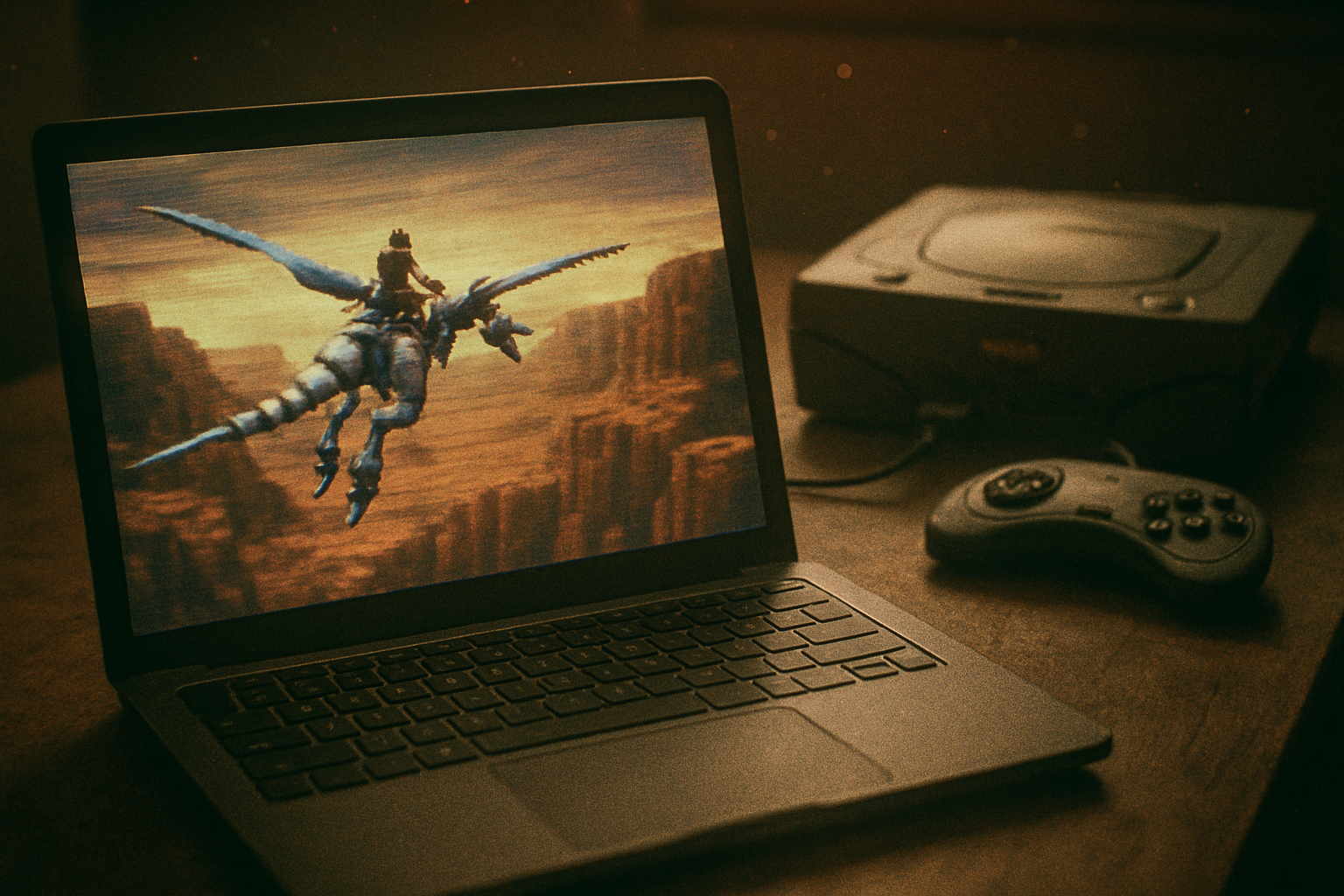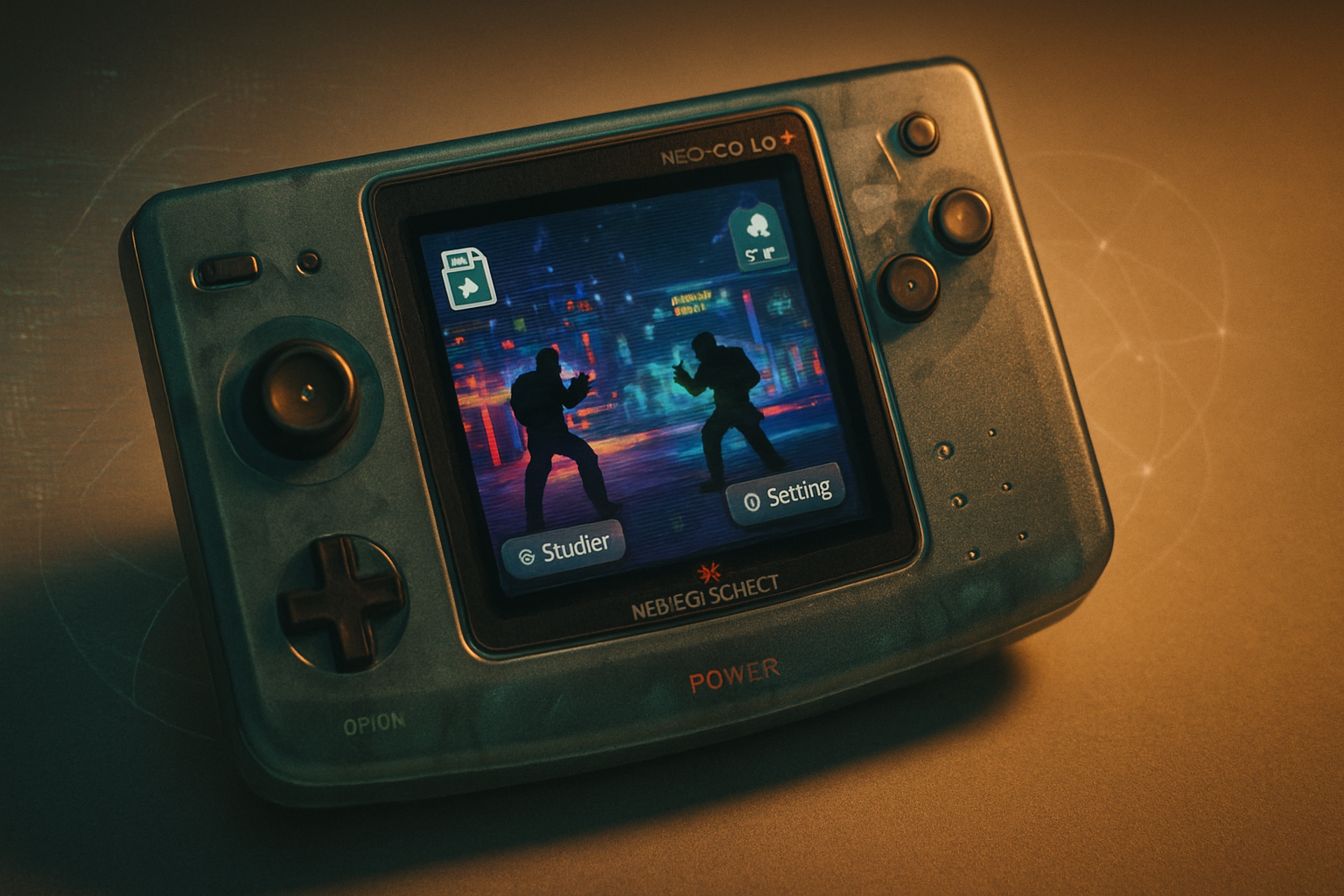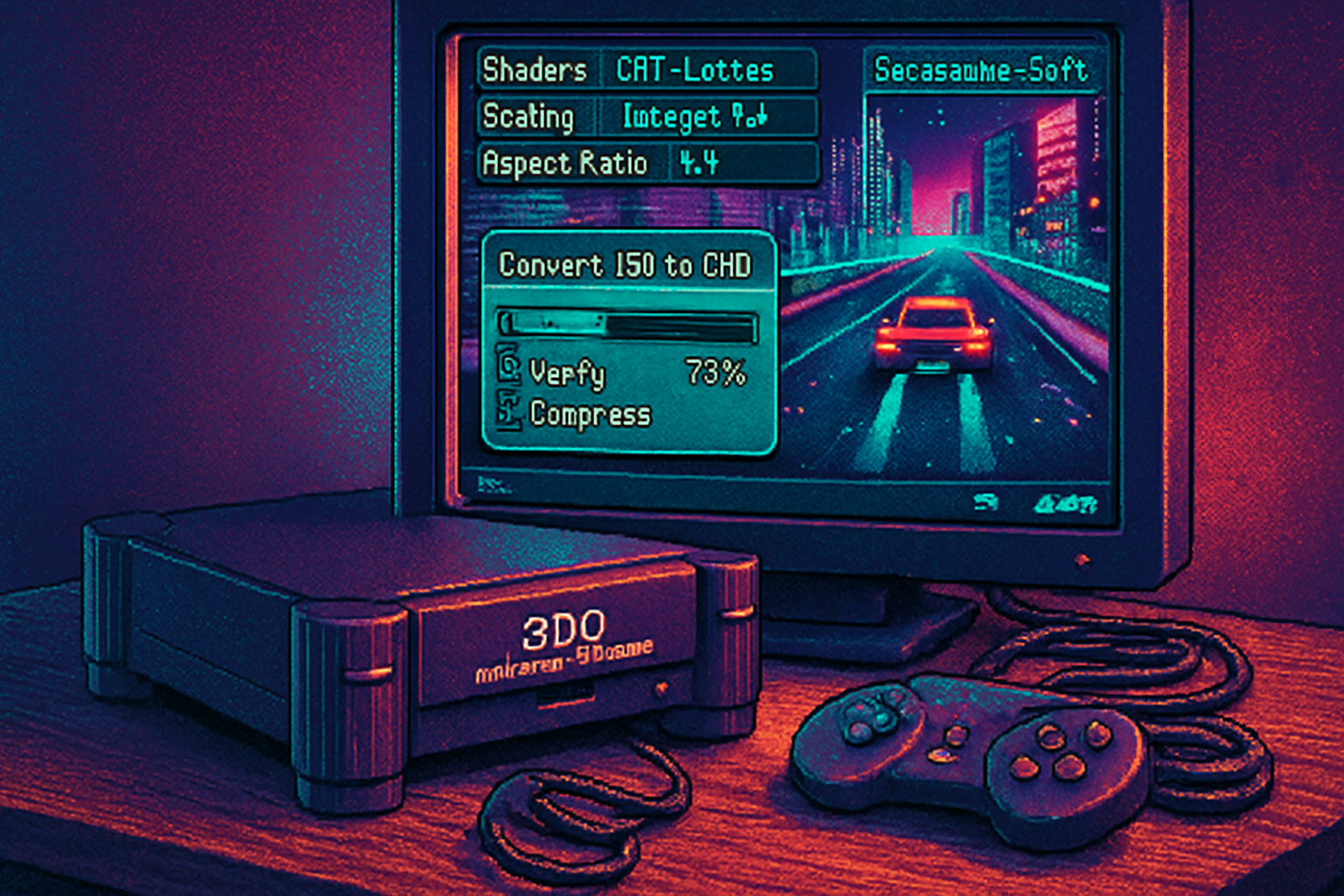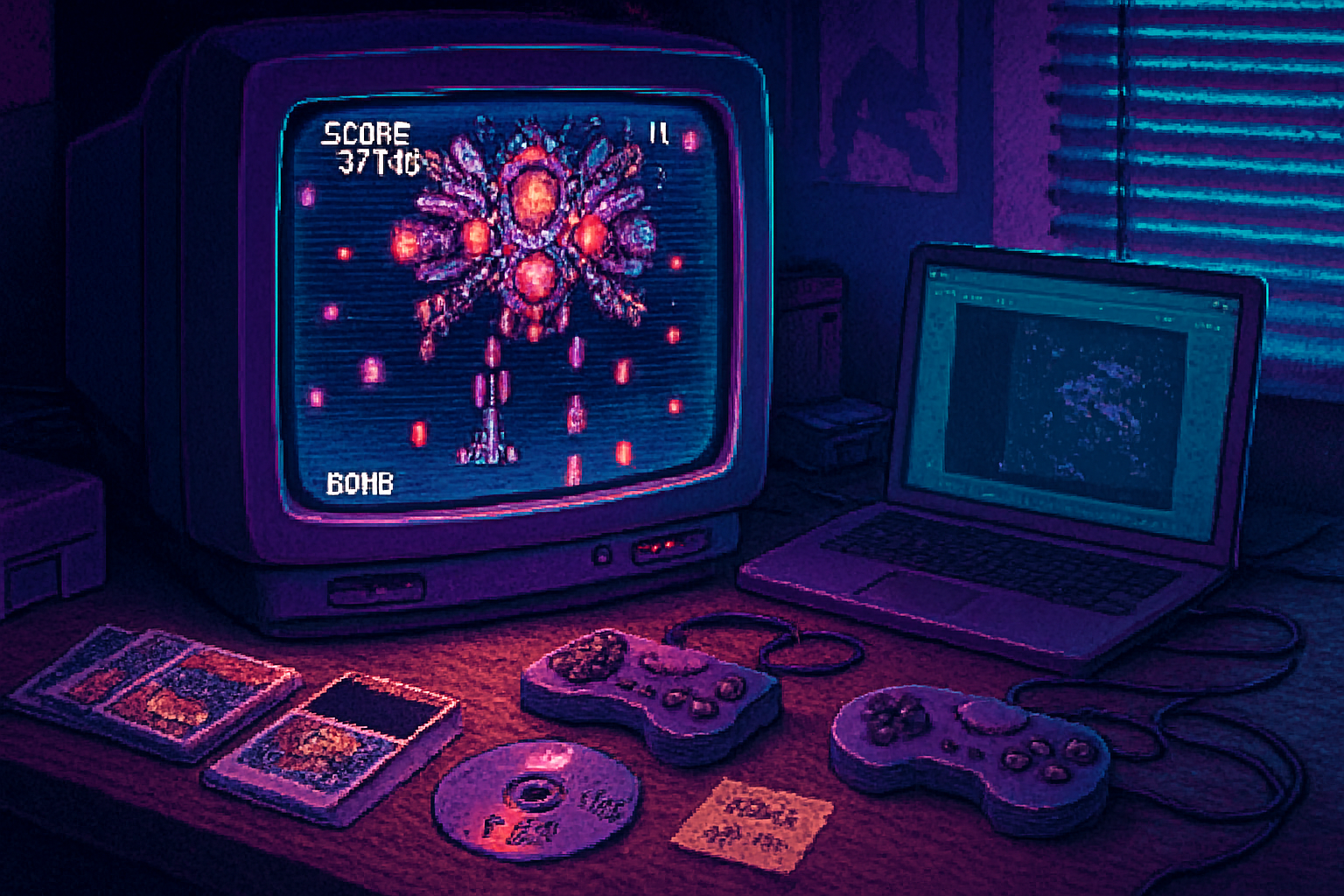· retrogaming · 7 min read
The Rise of Sega Saturn Emulators: Are They Worth the Hype?
A tour of the modern Sega Saturn emulation scene: why the Saturn is hard to emulate, who the major players are (Yabause, Yaba Sanshiro, SSF, MAME), practical trade-offs, and whether emulators actually recreate that dusty-console magic.

It started with a box in the attic - not a shrine, just a shoebox of cartridges and two jewel cases: one for Panzer Dragoon Saga, the other for NiGHTS. I blew dust into the optical drive, popped the disc into a machine that smelled faintly of mildew and vinyl, and spent 20 minutes remembering why Saturn owners are either smug or haunted. The hardware was maddening. The games were unforgettable.
If you’re reading this, you’ve probably asked the same question I did: can an emulator give you that experience without the pain - and without mortgaging your house for a copy of Panzer Dragoon Saga? More bluntly: are Saturn emulators worth the hype?
Why the Saturn is uniquely… difficult
Calling the Sega Saturn “quirky” is like calling a brick a bit heavy. The Saturn used a tangled web of processors and custom chips: dual SH-2 CPUs, multiple video processors (VDP1 and VDP2), a dedicated sound chip, and a disc-based architecture that developers exploited in cunning, hardware-specific ways.
That complexity created two durable facts:
- Developers could do things that were brilliant and very hardware-specific. That’s why many Saturn ports from arcade hardware looked and sounded special.
- Emulating all of those interactions faithfully is expensive in developer time and CPU/GPU cycles.
So progress has been a glass-half-full and glass-half-empty story: progress in accuracy and compatibility has been real, but it came slowly.
The main players (and what each gives you)
A short guide to the emulators people actually use today and what they’re good for.
Yabause (and Yabause cores for RetroArch)
- What it is - An open-source Saturn emulator with a long history and multiple ports.
- Strengths - Convenient, cross-platform, and available as a RetroArch/libretro core for easy front-end use. Good for casual play and many 2D/early 3D titles.
- Weaknesses - Less accurate than MAME or some purpose-built projects; some games exhibit graphical glitches or audio issues.
- Learn more: https://yabause.org/ and the libretro Yabause docs: https://docs.libretro.com/library/yabause/
Yaba Sanshiro (Android-focused builds)
- What it is - An Android-port (and modernized build) oriented toward playing Saturn titles on phones and Shield devices.
- Strengths - Surprisingly polished mobile experience, a practical option if you want portability and controller support.
- Weaknesses - Mobile limitations; not every title runs perfectly.
SSF (Windows classic)
- What it is - A historically important, Windows-focused Saturn emulator that many veterans praise for compatibility.
- Strengths - Excellent compatibility for many commercial titles on Windows and a generally smooth experience.
- Weaknesses - Historically closed-source and Windows-only; less active development than some open projects.
MAME / MESS (now unified in MAME)
- What it is - The Multi Arcade Machine Emulator (MAME) is a many-headed beast. In recent years it has absorbed and improved support for home systems like the Saturn.
- Strengths - The gold standard for accuracy. When MAME supports a Saturn title, it’s often the most faithful reproduction of the original hardware behavior. Active and thorough regression testing.
- Weaknesses - High system requirements, complex setup, and not as forgiving for casual users. But that’s the price of near-ironclad accuracy.
- Learn more: https://www.mamedev.org/
Newer/experimental projects (Saturnin and similar)
- What it is - A small ecosystem of newer, accuracy-focused open-source Saturn projects. They’re ambitious: aiming to model hardware behavior more precisely.
- Strengths - Potential for better long-term accuracy and preservation.
- Weaknesses - Often experimental, incomplete compatibility, and niche tooling.
Compatibility and performance - the pragmatic trade-offs
If you want a one-line TL;DR:
- Want convenience and decent performance on modern PCs or Android devices? Yabause/RetroArch or Yaba Sanshiro is likely your friend.
- Want the most faithful reproduction and aren’t afraid to wrestle with documentation and performance demands? Use MAME.
- Want the best Windows-native compatibility for a lot of titles with minimal headache? Many users still recommend SSF where it runs well.
Why that split exists: accuracy requires low-level timing fidelity. MAME goes deeper and emulates more of the Saturn’s internal quirks, which uses more CPU and demands careful configuration. Lighter emulators cut corners for speed, which can sometimes produce visual artifacts, audio stuttering, or slight behavioral differences (e.g., clipping, sprite priorities, palette quirks).
Some real-world notes:
- Panzer Dragoon Saga and other heavily disc-accessing RPGs can be picky about image formats and saving systems. Emulators that correctly emulate the Saturn’s CD subsystem will behave closest to the original.
- NiGHTS into Dreams and many 2D-rich titles usually run well across most emulators, but subtle alpha blending or sprite ordering might look different.
- Certain arcade ports or titles that used undocumented hardware tricks are where accuracy-first emulators shine.
Features that change the experience (and whether you should use them)
- Upscaling and high-resolution rendering - Makes polygons cleaner and combats texture blur. Great for screenshots and modern displays, but it can also reveal rendering hacks that developers used, making the game look technically “better” but less authentic.
- Shaders and CRT filters - If nostalgia equals scanlines and phosphor bloom for you, these filters will retrieve a lot of the feel. They’re subjective - for some games, filters are essential; for others, they’re overkill.
- Save states - Divine convenience. Terribly cheating. Use them if you like finishing games faster than you earned the satisfaction.
- Netplay, rewind, and cheats - Fun and modern additions, but they do drift from the original experience. Fine for casual play but not preservation.
- BIOS and legalities - Most Saturn emulators expect a BIOS dump for the cleanest compatibility. That’s legally gray unless you own the hardware and dump it yourself.
Controller feel - the invisible variable
Emulation can reproduce frames and pixels, but not the tactile history of a controller, the sticky plastic of a pad purchased in 1996, or the weight of a thumb finding the D-pad exactly.
- USB Saturn pads and adapters are available and worth the investment if you care about authenticity.
- Analog stick behavior (and triggers) sometimes maps poorly to modern pads; expect fiddling.
Case studies (short)
- Panzer Dragoon Saga - Runs on several emulators, but small CD-subsystem differences and save handling make some builds more reliable. On MAME/SSF it’s closer to native behavior; on lightweight builds you might see odd loading hitches.
- NiGHTS into Dreams - Generally robust across emulators, and benefits visibly from upscaling and shaders if you like smoother visuals.
- Saturn arcade ports - Best played under MAME or highly compatible builds to respect the original timing and palette quirks.
Recommendations - what to use depending on your goals
- Casual replay / convenience (desktop + lightweight setup) - RetroArch with the Yabause core or Yabause standalone. Easy UI, shaders, and controller integration.
- Mobile/Android - Yaba Sanshiro - it’s the most polished mobile path and supports controllers like the Xbox/dualshock clones via Bluetooth.
- Accuracy and preservation - MAME. Bring a strong CPU, read the docs, and be prepared to tweak.
- Windows-only balanced approach - SSF (if you can obtain and run it), especially if you want fewer technical surprises.
Checklist for the best experience:
- Use a clean cue/bin or ISO image; keep original bins when possible.
- Use the console BIOS if the emulator supports it and you legally own it.
- If you care about visuals, test a few upscaling options and a CRT shader.
- Consider a USB Saturn pad or a high-quality wired controller with good mapping.
- Try multiple emulators for the same game - compatibility varies.
The final verdict: worth the hype?
Yes - with a big but. The Saturn’s emulation scene has matured to the point where many of its best games are readily playable on modern hardware, often with conveniences the original never had (save states, higher resolutions, easy controller remapping). For casual nostalgia and many serious play sessions, emulators deliver enormous value.
But: if you’re a stickler for authenticity - the exact timing, the subtle hardware idiosyncrasies, the precise audio quirks - then nothing fully replaces the console and a serviceable physical pad. Emulation is getting close, and in some cases (MAME/SSF combos) it’s scarily faithful, but the Saturn’s intrinsic weirdness means there will always be edge cases where the hardware remains the authority.
So are Saturn emulators “worth the hype”? If your goal is to play the library, rediscover favorites, or preserve access to rare titles without selling a kidney - yes. If your goal is total archaeological fidelity, be prepared to chase patches, tweak settings, and sometimes accept that the last 2% of authenticity requires the original hardware.
Play, compare, and then decide whether the nostalgia is in the pixels, the pad, or the slow, stubborn hum of a console that refused to be normal.
References
- Sega Saturn (hardware context): https://en.wikipedia.org/wiki/Sega_Saturn
- Yabause emulator: https://yabause.org/
- Libretro (Yabause core docs): https://docs.libretro.com/library/yabause/
- MAME (accuracy-focused emulation): https://www.mamedev.org/


